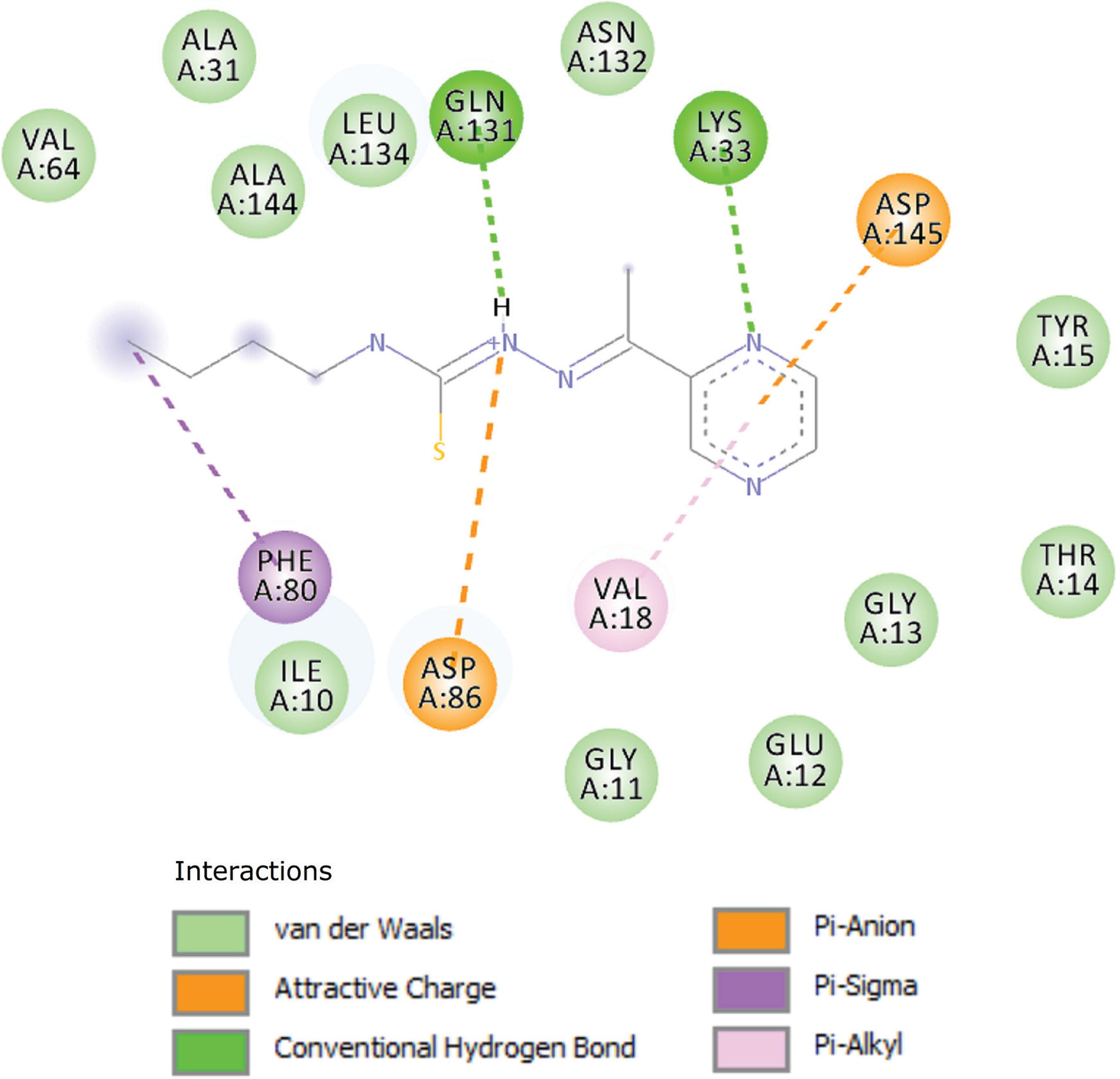In this study, a new thiosemicarbazone ligand, namely acetylpyrazine N(4)butylthiosemicarbazone (APBT), was synthesized and characterized using 1H and 13C nuclear magnetic resonance (NMR) and Fourier transform infrared (FTIR) spectroscopies. Quantum chemical calculations were performed using density functional theory at the B3LYP/6-311++G(d,p) basis set level. The optimized molecular geometry of APBT is discussed based on X-ray structural reports from the literature. The assignment of the vibrational frequencies was done based on a potential energy distribution analysis using the vibrational energy distribution analysis (VEDA) 4 software. The energy gap between the highest occupied molecular orbital (HOMO) and lowest unoccupied molecular orbital (LUMO) was evaluated to study the reactivity and stability of the compound. Global chemical reactivity and local reactivity descriptors of reactants and the product (APBT) were calculated to study the reaction mechanism. The region of interaction during the reaction to form APBT was determined using molecular electrostatic potential analysis. Finally, a preliminary study of the title compound as a cyclin-dependent kinase (CDK) inhibitor was further evaluated by performing a docking calculation.
Keywords:
thiosemicarbazone; DFT; global reactivity descriptors; CDK inhibitor






